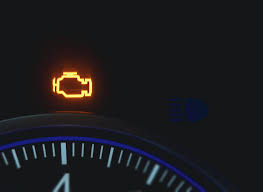The check engine light bulb is an essential component of your vehicle's engine management system. It is responsible for illuminating the check engine light on your dashboard when a problem is detected. This light can alert you to a wide range of issues, from a simple malfunctioning sensor to a more serious problem with the engine or transmission. By addressing the problem as soon as the light comes on, you can prevent further damage to your vehicle and potentially save yourself from costly repairs down the road.
Common Causes of Check Engine Light Bulb Failure
There are several common causes of check engine light bulb failure. One of the most common is a blown fuse. This can happen if the bulb is not properly connected or if there is a problem with the electrical system in your vehicle. Another common cause of check engine light bulb failure is a malfunctioning sensor. This can happen if the sensor is not properly calibrated or if it is damaged.
Symptoms of a Failed Check Engine Light Bulb
If your check engine light bulb is not working properly, you may notice one or more of the following symptoms:
- The check engine light does not come on when a problem is detected
- The check engine light comes on but is dim or difficult to see
- The check engine light flickers or flashes
How to Maintain Your Check Engine Light Bulb
Proper maintenance of your check engine light bulb is essential to ensure that it is working properly. Here are a few tips to help you keep your check engine light bulb in top condition:
- Check the fuse: Make sure that the fuse for the check engine light bulb is not blown. If it is, replace it with a new one.
- Check the sensor: Make sure that the sensor for the check engine light bulb is properly calibrated and functioning correctly.
- Clean the bulb: Clean the bulb with a soft cloth to remove any dirt or debris that may have accumulated on it.
How do I know if my check engine light bulb is not working?
If your check engine light bulb is not working, you may notice one or more of the following symptoms: The check engine light does not come on when a problem is detected, The check engine light comes on but is dim or difficult to see, The check engine light flickers or flashes.
How do I replace my check engine light bulb?
To replace your check engine light bulb, you will need to consult your vehicle's owner's manual for specific instructions. In general, you will need to locate the bulb, remove the old bulb, and install the new one.
How often should I check my check engine light bulb?
It is a good idea to check your check engine light bulb every time you have your car serviced, or at least once a year.
In conclusion, the check engine light bulb is a crucial component of your vehicle's engine
